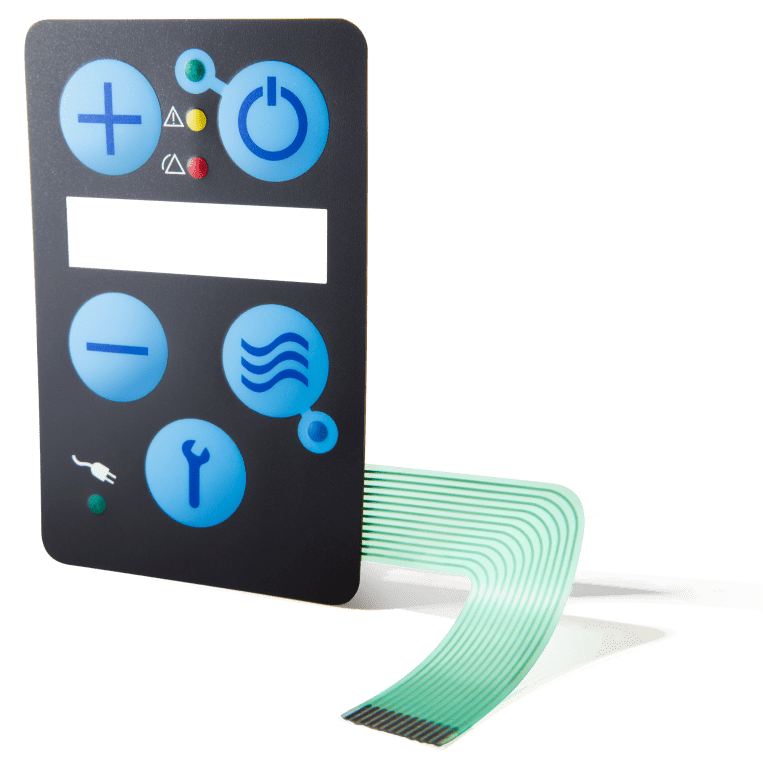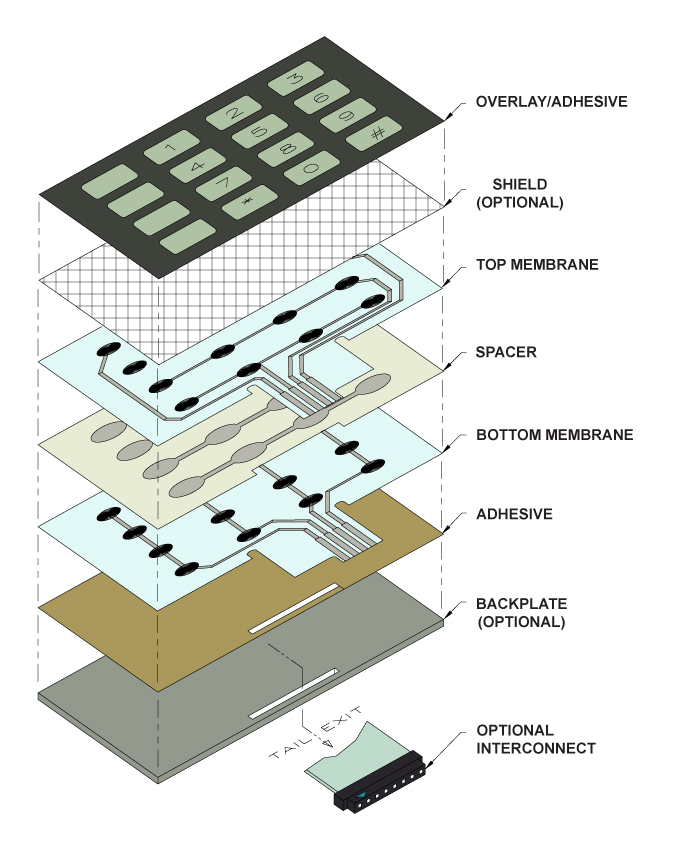How Membrane Switches Enhance User Experience in Tech Gadgets
How Membrane Switches Enhance User Experience in Tech Gadgets
Blog Article
Membrane Switch Technology: The Secret to Dependable and Cost-efficient User Interfaces
Membrane switch technology has emerged as a critical part in the style of user interfaces, supplying both reliability and cost-effectiveness throughout a diverse variety of applications. Its durable construction guarantees resistance to ecological challenges, while the versatility in layout permits customized options that fulfill specific industry requirements. As we discover the multifaceted benefits of membrane switches, their potential for technology raises questions regarding future applications and advancing fads. What does the next chapter hold for this innovation in a significantly digital landscape?
Comprehending Membrane Layer Change Modern Technology
Membrane switch innovation is a commonly used user interface remedy in numerous electronic devices, offering a seamless blend of performance and design. This modern technology incorporates several layers of products, generally containing a graphic overlay, spacer layer, and a circuit layer. The graphic overlay displays the interface elements, while the spacer layer separates the circuit layer from the overlay up until a user activates a switch.
When pressure is related to the overlay, the circuit layer finishes the electric circuit, sending out a signal to the gadget. This mechanism permits for different arrangements, consisting of tactile comments and backlighting alternatives, enhancing customer interaction. Membrane buttons are normally produced making use of sturdy materials such as polyester or polycarbonate, ensuring long life and resistance to environmental elements like dampness and dust.
The adaptability of membrane layer switches over enables their application in varied sectors, including medical devices, consumer electronic devices, and industrial controls. Their small style enables combination right into space-constrained settings, providing an efficient customer interface without compromising visual appeal. Understanding the ins and outs of membrane button innovation is vital for manufacturers and developers seeking to develop trustworthy and effective human-machine user interfaces.
Key Advantages of Membrane Switches
While numerous interface solutions exist, membrane layer switches over offer unique benefits that make them a recommended selection in various applications. Among the key benefits is their durability; membrane layer buttons are made to endure extreme ecological conditions, including dampness, dust, and temperature level fluctuations, guaranteeing resilient efficiency. This resilience substantially decreases the demand for regular replacements, consequently lowering general upkeep prices.

In addition, membrane layer buttons are lightweight and compact, making them suitable for applications where room is restricted. Their low-profile design contributes to a streamlined look without jeopardizing functionality.
Cost-effectiveness is also a notable benefit, as the manufacturing process for membrane layer changes tends to be less costly compared to typical mechanical switches. This affordability, incorporated with their integrity and simplicity of installment, settings membrane changes as a useful option for a wide variety of industries looking for effective and effective interface.
Applications Across Various Industries
Exactly how do membrane layer switches adjust to the varied needs of numerous markets? Membrane layer button technology is progressively identified for its flexibility, making it appropriate for a vast range of applications across several fields.
In consumer electronics, membrane buttons give a compact service for push-button controls and home devices, enhancing user experience with user-friendly layout. In addition, the commercial field leverages membrane check this layer switches for machinery control panels, gaining from their resistance to severe settings, such as dampness and dust.
Military and aerospace applications also utilize membrane switches for their dependability and capability to stand up to severe problems, making sure functional effectiveness in essential scenarios. The food and drink market embraces these switches for automated systems, where sanitation and ease of procedure are extremely important (membrane switch). Ultimately, membrane layer switches are customized to fulfill the distinct needs of each industry, verifying their crucial duty in contemporary technology interfaces
Design and Modification Alternatives

In the world of membrane switch modern technology, design and customization alternatives play an essential role in boosting performance and user communication. These switches can be customized to satisfy specific functional requirements and visual choices, making them flexible components in numerous applications.
One of the primary personalization options is the format of the button itself, which can be designed to suit unique customer interfaces and ergonomic considerations. By readjusting the shape, dimension, and arrangement of switches, producers can develop user-friendly layouts that help with convenience of use. Furthermore, the incorporation of various shades and graphic overlays enables branding and improved exposure, ensuring that individuals can promptly recognize features.
Additionally, membrane switches can be engineered with numerous tactile feedback systems, such as elevated buttons or distinct clicks, to boost the individual experience. Various materials can likewise be picked for resilience and ecological resistance, addressing aspects such as dampness, temperature fluctuations, and chemical direct exposure.
Inevitably, the extensive style and modification options offered in visit our website membrane layer button technology equip services to develop tailored services that not only fulfill useful requirements but likewise line up with their branding and functional demands.

Future Trends in Membrane Layer Buttons
As membrane layer switch innovation proceeds to advance, future trends are progressively concentrated on boosting user experience and integrating sophisticated performances. One substantial fad is the integration of touch-sensitive and capacitive innovations into standard membrane layer buttons. This advancement enables more instinctive customer interfaces, giving responsive comments while preserving a smooth style.
An additional arising fad is the usage of eco pleasant products, driven by the expanding need for lasting manufacturing practices. Manufacturers are looking for to decrease their carbon footprint by utilizing recyclable substratums and low-impact inks, aligning have a peek here with global sustainability goals.
Moreover, the surge of the Net of Points (IoT) is motivating the unification of wise functions into membrane switches. Boosted connection alternatives will certainly allow devices to connect with each various other, permitting for smooth combination into broader systems.
In addition, innovations in printing modern technologies, such as electronic printing, are enabling for greater layout adaptability and personalization. This enables manufacturers to generate complex styles and lively shades cost-effectively.

Conclusion
In verdict, membrane button modern technology stands for a vital development in customer interface style, offering considerable advantages in longevity, modification, and cost-effectiveness. As developments proceed to arise, specifically in touch-sensitive user interfaces and sustainable products, the possibility for membrane changes to enhance individual experience and performance continues to be appealing.
Report this page